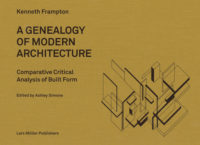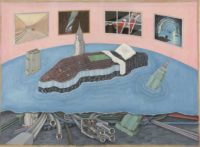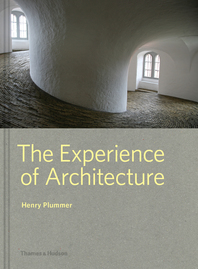Drawing on Architecture: The Object of Lines, 1970-1990
By Jordan Kauffman

Drawing on Architecture: The Object of Lines, 1970–1990, by Jordan Kauffman. MIT Press, 361 pages, $34.95.
Author Jordan Kauffman documents an important moment in recent history when architecture reasserted its cultural status through the showcasing of particular drawings. The episode begins in 1972 with the publication of Five Architects, which introduced the work of Peter Eisenman, Michael Graves, John Hejduk, Richard Meier, and Charles Gwathmey, and ends with the 1988 Deconstructivist Architecture exhibition at the Museum of Modern Art (MoMA). The significance of Five Architects for Kauffman is that, while many of the projects included were intended to be built, they were mostly illustrated by abstract, graphic drawings. The 1988 exhibition, with guest curators Mark Wigley and Philip Johnson, “displayed the drawings with reference to the creation of buildings, not as independent” artworks. (After 1990, as Kauffman’s title indicates, computerization gradually reduced the significance of hand-drawing altogether.)
Significant milestones in Kauffman’s 20-year history are the exhibition The Architecture of the École des Beaux-Arts at MoMA in 1975 by curator Arthur Drexler, and three pioneering exhibitions mounted at the Leo Castelli Gallery between 1978 and ’84 that offered architectural drawings for private sale, through which they came to be viewed as artworks and began having a monetary value independent of the buildings they depicted. Kauffman documents this in detail, including prices for drawings and personal interviews with such key players as Kristin Feireiss, who founded the Architecture Forum Aedes in Berlin in 1980; John Harris, curator emeritus at the Royal Institute of British Architects; Barbara Jakobson, organizer of the Castelli exhibitions; and Max Protetch, the owner of the gallery that became the longest-lasting exhibitor and dealer of such drawings. Despite this thoroughness, the result is not completely satisfactory. While the book is sumptuous and extensively illustrated, only the reproductions of individual drawings stand out; the numerous photographs of exhibition installations are disappointing, since the drawings are barely visible.
Even though this period enhanced the cultural stature of architectural drawings, their content was sometimes criticized from a political perspective. The third Castelli show included drawings of historicist garden follies designed by Quinlan Terry for the country estate of the then deputy chairman of Britain’s Tory party. Kauffman relates that a “humorous inscription” suggested that the funds used to build them “would otherwise have fallen to” the government. This kind of attitude, during a time when Margaret Thatcher was gutting public services to benefit her wealthy backers, did not go unnoticed by American critics, who, Kauffman writes, also gave “scathing” reviews to the show’s follies catering to the “idle rich” in Reaganite America.
Perhaps the most positive legacy of the period was the establishment of new institutions devoted to architectural culture, such as the Canadian Centre for Architecture in Montreal (founded in 1979), the Architecture Forum Aedes, and the German Architecture Museum in Frankfurt (established in 1983). All have gone on to make major international contributions to this discipline.





